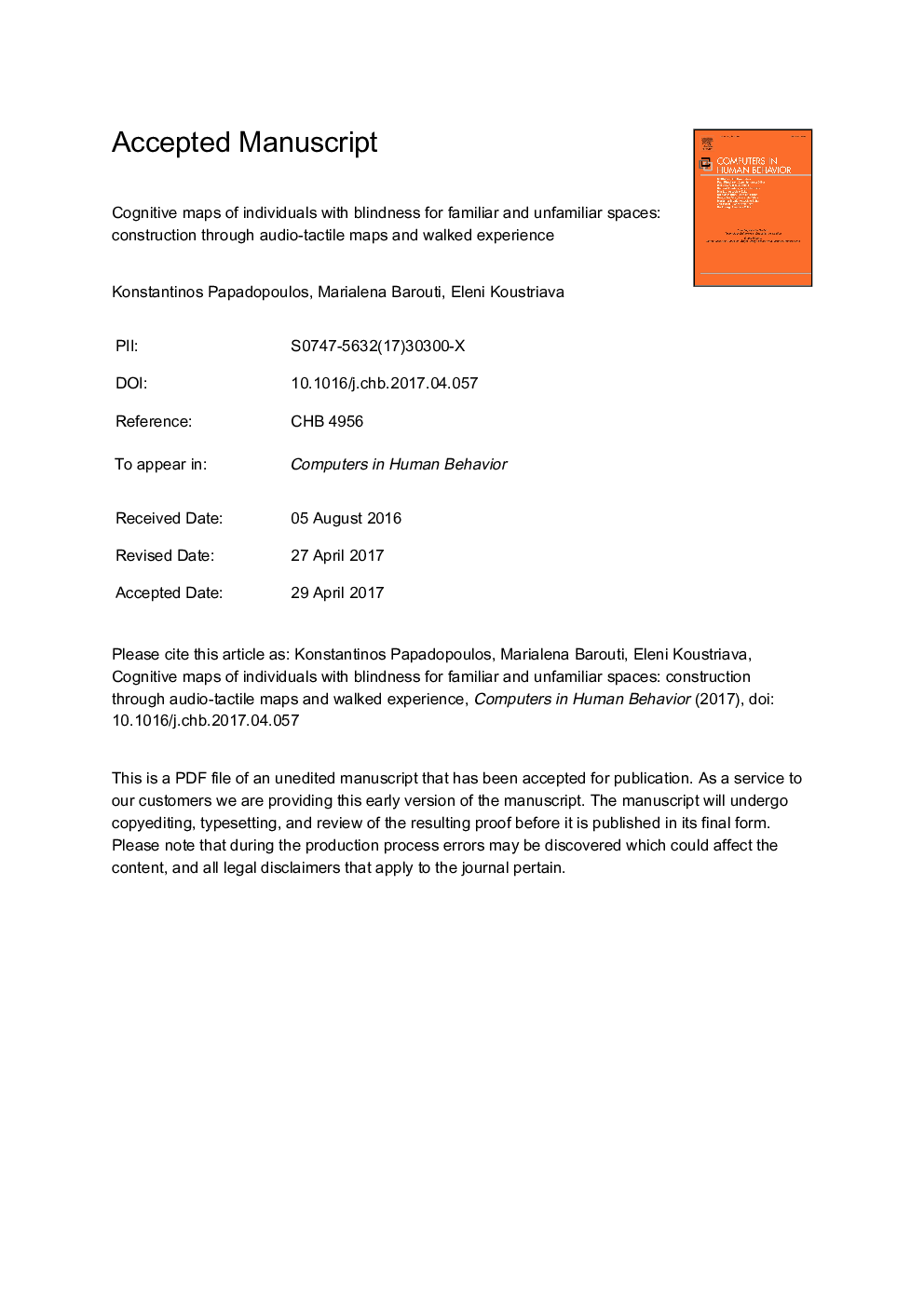| Article ID | Journal | Published Year | Pages | File Type |
|---|---|---|---|---|
| 4937509 | Computers in Human Behavior | 2017 | 41 Pages |
Abstract
Though individuals with visual impairments are able to form mental representations of space, it is critical to investigate the way they develop or update their cognitive maps taking a closer look at quantitative and qualitative data on them. The aims of the present study were to examine the ability of individuals with blindness to create cognitive maps of routes in familiar and unfamiliar areas through the use of audio-tactile maps, and to compare these cognitive maps with those created after independent movement in the real environment regarding their precision and inclusiveness. Thirty adults with blindness participated in this study. The findings of the present study reflect the positive effect of audio-tactile maps on cognitive map creation and, thus, their effect on the spatial knowledge of people with blindness. Moreover, the findings featured the dominance of the audio-tactile map over walking experience, since the participants formed more complete cognitive maps after having explored the audio-tactile map than walking along the route in the unfamiliar area.
Related Topics
Physical Sciences and Engineering
Computer Science
Computer Science Applications
Authors
Konstantinos (Professor), Eleni Dr., Marialena (PhD Student),
